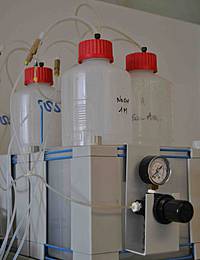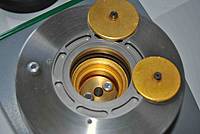
>HPAE-PAD
Pulsed Amperometric detection
High-Performance Anion-Exchange chromatography with Pulsed Amperometric Detector (HPAE-PAD) is commonly used to determine anionic analytes without derivatization, with high selectivity and sensitivity in various sample matrices.
The method is key for the determination of carbohydrates: they are typically difficult to analyze as they are very polar compounds, exhibit similar structural characteristics, and do not have a suitable chromophore.
HPAE: Carbohydrates have pKas in the range of 12-13. Hydroxide-based eluents allow carbohydrates to become ionized as the pH rises above the pKa of the analyte. Consequently they can be separated by anion-exchange chromatography.
Coupled Pulsed Amperometric Detection is a direct detection technique. Potential variations of the detector result in oxidizing the carbohydrates on the surface of a gold working electrode in highly alkaline solution. This generates a current that can be measured.
HPAE-PAD is highly specific of electroactive compounds, i.e. those compounds that become ionized at high pH values and contain functional groups which become oxidized at the detection voltage employed. Neutral or cationic components elute in, or close to, the void volume of the column.
The presence of an analyte gives a response assumed to be proportional to the concentration. The instrument’s response to the analyte in the unknown should be compared with the response to a standard.
Our company
PHYTOSAFE
2 rue Marx Dormoy
64000 Pau
FRANCE
Tél : +33 (0)5 59 84 79 91
Fax : +33 (0)5 59 84 80 55
Email : contact@phytosafe.com
Terrestrial ecotoxicology
Acute toxicity to earthworms
Our company
PHYTOSAFE
2 rue Marx Dormoy
64000 Pau
FRANCE
Tél : +33 (0)5 59 84 79 91
Fax : +33 (0)5 59 84 80 55
Email : contact@phytosafe.com
